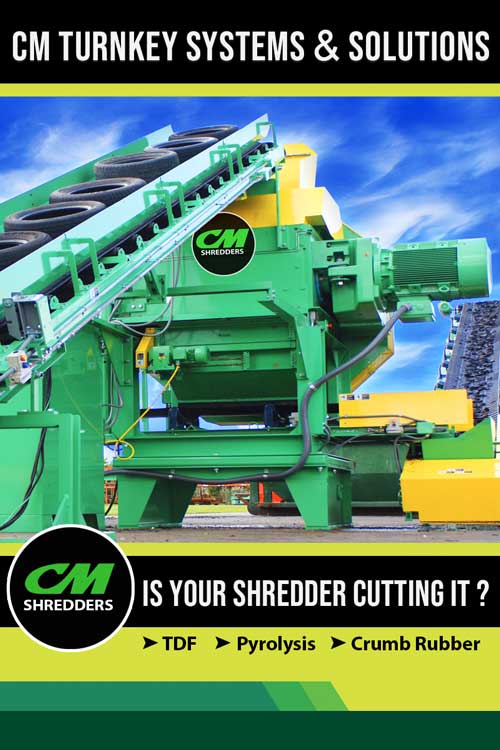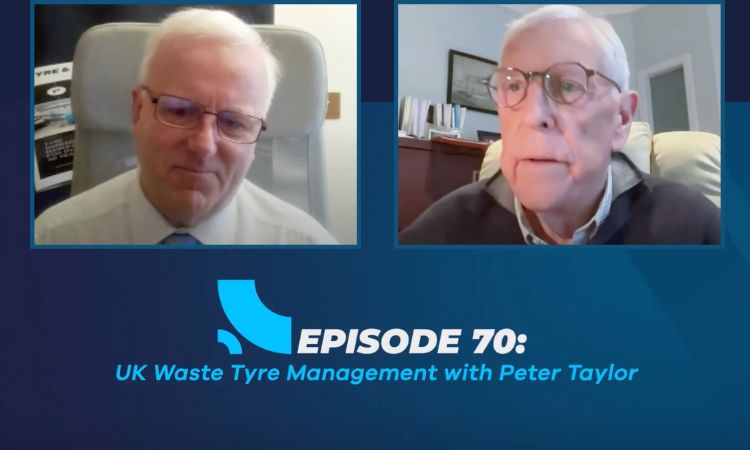Weibold Academy: How recycled tire-derived materials can improve properties of concrete
Today, scrap tires find numerous uses in many industrial applications and consumer goods. Even though the number of applications grows, there is still a huge surplus of scrap tires available for recycling and many tire stockpiles around the world will remain intact yet for decades.
Researchers claim, however, that a huge number of scrap tires can be successfully reused in concrete; interestingly, not only rubber can be used to improve properties of concrete, but the bulk of other materials contained in tires, i.e. recycled steel and synthetic fibers. This article briefly summarizes findings of such researches.
Fatma Sulaiman Nasser al Kindi, a chemical engineering student at Caledonian College of Engineering in Oman, claims that tire recycling allows creating substitute for conventional aggregates used in concrete production. Fatma explains that, as part of the recycling process, scrap tires are downsized into crumb rubber of various sizes. After that, the processed material is combined with concrete blend, or it serves as raw material for other types of pavement. Fatma further notes that crumb rubber from tires serves as a binding component in blends; this allows preventing preliminary cracks in concrete slabs.
In an effort to improve the durability and resilience of concrete, other researchers have attempted to use recycled rubber within concrete mixes, too. The result of this has been positive as it has extended the lifespan of concrete structures, roads and bridges.
An EU-funded project led by experts at the University of Sheffield and Imperial College London, also working in association with the European Tyre Recycling Association, has verified through extensive experimental work that all tire components can be reclaimed in concrete. The project team claims that recycled rubber, will allow buildings and other structures to flex up to 10 percent along their length – 50 times more than structures made from conventional concrete. In addition to rubber, the team verified usage of tire wire, which is exceptionally strong, and found it can be blended with other steel fibers to increase the flexural strength of concrete – saving on virgin materials and reducing energy input requirements by 97 percent. These fibers are also much thinner than conventional steel fibers, which means there are more in the concrete, helping to control cracks at the micro level.
According to the researchers, a third component, the textile polymer fibers, used primarily as reinforcement in passenger tires, is also of high quality and strength and can be used to control cracking at the early stages of concrete curing, when the material is still plastic. Textile fibers have also been shown by the Sheffield team to help prevent explosive concrete spalling during fires, and applications are being developed for tunnels and buildings.
Plans have been made to use the new concrete material in seismic resistant buildings, vibration isolation and bridge bearings. As part of the EU-funded Anagennisi project, demonstration projects will be undertaken in several countries to convince contractors and infrastructure owners of the benefits.
On the other continent, a team of researchers and engineers from the University of British Columbia supports Sheffield’s team idea. They invented a more robust and resilient type of concrete using tire-derived fibers. According to the UBC, the new type of concrete can be used to build structures like buildings, roads, dams, bridges, etc.
The UBC team used different proportions of tire fibers searching for an ideal mix, which eventually included 0.35 percent of tire-derived fibers, as found by UBC researcher Obinna Onuaguluchi who is a postdoctoral fellow in civil engineering. Onuaguluchi asserts that fiber inclusion reduces crack formation by over 90 percent compared to conventional concrete. While concrete structures suffer from micro cracks over time, polymer fibers would serve as means of protecting the structure and enabling it to last longer.
Research description listed in Materials and Structures was supported by IC-IMPACTS, Tire Stewardship of British Columbia, Atlantis Holdings and Western Rubber Products – a recycler that supplied tire-derived fibers to UBC. Another recent research by Figueiredo, Huang, Angelakopoulos, Pilakoutas and Burgess investigated effects of cleaned recycled fibers extracted from end-of-life tires on the explosive fire-induced spalling of concrete. After carrying out 24 spalling tests the team concluded that “Recycled tire steel fibers show the potential of preventing fire spalling damage by keeping spalled concrete attached to the heated surface, thus protecting the main steel reinforcement. The use of these fibers might lead to safe and sustainable fire spalling mitigation solutions.”
These researches support the idea that recycled tire-derived materials can find more applications in industry. To fuel innovation and boost usage of recycled tire-derived materials in concrete, larger-scale pilot projects and concerted efforts of industry players are needed.
Weibold carries out comprehensive market studies and, thanks to its collaboration with research institutions and industry experts, counsels businesses in the field of tire recycling. Contact us at [email protected] to learn how you can benefit from our services!
Weibold is an international consulting company specializing exclusively in end-of-life tire recycling and pyrolysis. Since 1999, we have helped companies grow and build profitable businesses.











